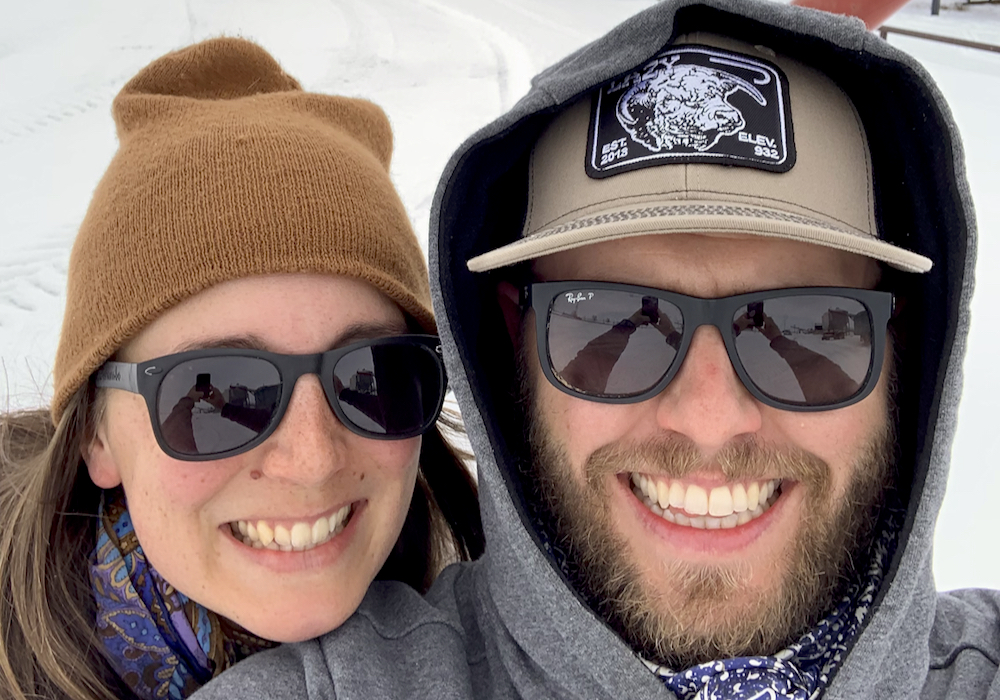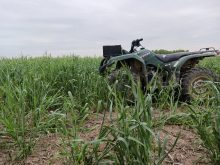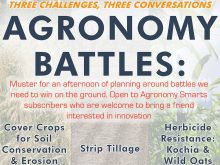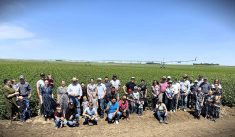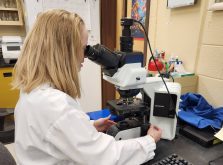Shorty Fensky first found his passion for soil health when he went to the 2015 Western Canada Conference on Soil Health.
Seven years later, he was back – sharing that passion on a producer panel.
“At the 2015 conference, the very first presenter was Dr. Yamily Zavala and her presentation was called ‘What is Soil Health?’ She was explaining exactly the constraints we were seeing in our field,” said Fensky, who operates a small mixed operation of cattle and crops with his brother Cevin near Thorsby.
Read Also

Grazing ‘sweet spot’ boosts pasture performance
Timing-focused approach to pasture management touted to boost forage growth, livestock gains while also cutting farmer labour and inputs
In 2018, Fensky and his brother took over the farm from their dad and started implementing more soil health principles and sharing what they learned.
“People ask me instead of asking the experts,” he said. “I tell them I’m the furthest thing from an expert. I just have more years behind me researching.”
Instead, Fensky calls himself a “soil health enthusiast.”
“Soil health practices literally saved our farm,” he said. “I do encourage people to practice them, because it will save you money in the long run.

“In the economic climate that we’re in right now, soil health can help a lot of producers with their economic issues. You can never predict what interest rates are going to do, but at least using the soil health practices, it kind of cushions the adversity you will face.”
[RELATED] Research leader’s passion for soil health proves infectious
There were plenty of soil health enthusiasts at the event (now called the Western Canada Conference on Soil Health & Grazing) with the 500 spots quickly selling out.
It’s not just because the conference features leading experts from across the continent, including Zavala, the Chinook Applied Research Association’s soil health guru. An equally big draw is the opportunity to network with other attendees and learn what they are doing on their farms.
Digging into cover crops
Connecting with other farmers was the main attraction for Fred Niedoff, who manages a grain farm near Camrose ,although that’s something he does year-round through WhatsApp.
The app (owned by Facebook) allows users to set up groups to share messages, documents and images. Niedoff started a WhatsApp group with Fensky and their friend, Jana von Freier. The group now has more than 80 members – producers, researchers and educators from Canada, the U.S. and Australia.
A pivotal moment for Niedoff came in 2017 when wireworms became a serious problem on his farm.
“I talked to all the chemical reps that I knew and I could find, and no one could give me a solution that I was looking for to control the wireworms,” said Niedoff, who moved to Canada from Germany 12 years ago and has been on the same farm for 10 years.
Frustrated, he began talking to organic farmers, and attended a talk given by Nicole Masters, an agro-ecologist from New Zealand who has made several trips to Alberta to give presentations on soil health.
“She was promoting regenerative agriculture. From then on, things started to make a lot more sense,” said Niedoff.
[RELATED] Give cover crops a shot and have some fun, says soil health expert
This started him on a journey that eventually led him to try cover crops. A couple of years ago, he seeded a mix of six or seven cover crop species. This improved his soil, but he couldn’t find anyone who would buy it for feed, he said.

Still, Niedoff was sold on soil health and regenerative agriculture. In September, he seeded a cover crop mix of wheat, peas, barley, oats, flax, buckwheat and millet. The goal was to feed the microbes in the soil until frost took the crop out.
“This is the only way to go forward. We just have to fine tune a few things,” he said.
Change as a constant
Zoe Gould farms with her brothers, Farley and Matthew, on a mixed operation near Consort. Between the three of them, there are all sorts of irons in the soil health fire.
“There’s lots of little things that we are working on,” she said. “We’ve been trying to improve things. We do standing corn grazing, we do no-tillage, we use a strip header to catch more snow as we’re in quite a dry area, we started doing more intensive grazing, moving the cows more often off the grass to let it recover and get more growth that way.
“Those were a few things, and I was hoping to learn more and expand on that and on what we could be doing.”
Making the land more sustainable is the focus but so is finding ways to implement practices in an efficient and economical manner, said Gould, who recently returned to the farm after a few years away and deals more with the cattle side.
“If we don’t do it right, there’s less grass and less grass ready for the next year,” she said. “If we maintain it properly, we have better grass and more grass. It makes a huge difference. I’m still learning.”

Her brothers tried cover cropping this year but didn’t have enough moisture. They have also been trying ultra-early seeding and are looking to leverage soil mapping.
Change has become a constant, whether that’s trying something new or fine-tuning what’s working , Gould said.
“We change a couple of little things every year. We used to start calving the cows May 1 and the heifers May 15, but now we’ve pushed everything up to May 1 to try to get some of those bigger calves, but still calve when it’s less work to calve them out.”
‘Awesome but still a niche’
While many conferences were able to offer a scaled-down online version during the pandemic, the Western Canada Conference on Soil Health went on hiatus.
Angela Kumlin and husband Matt were among those eager to get back to the business of talking and learning about soil health.
“This is our second time coming,” she said. “It’s been really great to just pick up on things that you don’t hear anywhere else that align with those goals.”
The couple are raising cow-calf pairs near Cochrane and also custom graze in the summer and run their own yearlings. They farm with help from Matt’s father and a few part-time employees in the summer.
“We’ve only been on the farm for five years now,” said Kumlin. “When we moved back to it, we really shifted the focus from conventional to regenerative.”
[RELATED] Regenerative agriculture is all the rage, but what is it exactly?
Their land isn’t suitable for annual cropping, so they have always been focused on grazing.
“We got introduced to the concept of soil health and the connection to human health and that really became the priority for us,” she said. “We have been implementing a lot of different grazing practices and changing the genetics of the pairs that we run.”
The couple twice attended the Ranching for Profit School (in Colorado four years ago and last month in Alberta) and view soil health practices and increased profitability as going hand in hand.
“This year, we installed a water pipeline that we are hoping to use to manage some land a little more intensively, consolidating herds, so we can have more impact and more rest and recovery,” said Kumlin.
But like so many at the conference, she said the learning curve becomes a lot less steep when you can connect with other producers.
“At this point, regenerative agriculture is really starting to spread and that’s awesome, but it’s still a niche,” she said. “It’s just great to come here and connect with people and try out your ideas on your peers and see what has worked for other people and what hasn’t and learn from their mistakes.”


